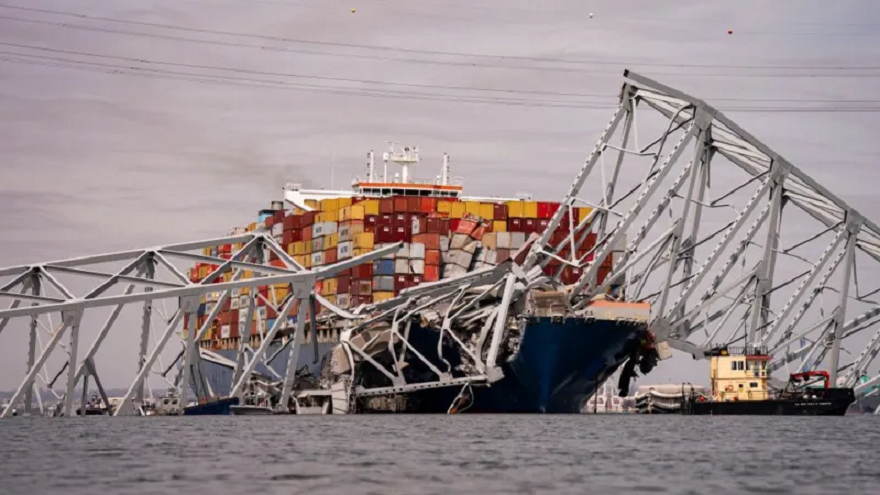
The largest crane on the eastern US seaboard has reached Baltimore as part of a significant cleanup operation following the collapse of the Francis Scott Key Bridge. Shipments in and out of the busy port are halted as the wreckage looms over the cargo ship it collided with.
Efforts to recover the bodies of four workers are paused due to the dangers involved in diving amidst the wreckage. President Joe Biden has announced plans to visit Baltimore next week to assess the aftermath and discuss federal assistance.
With the port being a crucial economic hub for Maryland and a vital link for US and global trade, the impact of the incident is substantial. Eight construction workers were on the bridge repairing potholes when the collision occurred, resulting in two rescues, two recovered bodies, and four presumed dead.
The salvage operation faces immense challenges, with thousands of tons of steel sitting on the ship and the presence of debris complicating underwater visibility. The US Army Corps of Engineers, along with US Navy contractors and over 1,100 engineering specialists, will be involved in the operation.
The installation of the Chesapeake 1000 crane, capable of lifting 1,000 tons, commenced on Friday, followed by a smaller crane on Saturday. Careful dismantling of debris is necessary to prevent hazardous materials, such as paint stored in shipping containers on the ship, from spilling into the river.
Efforts to contain any leaks are ongoing, with floating booms deployed in the river. Experts predict it could take a month to reopen the Port of Baltimore and years to rebuild the bridge, with the investigation into the incident expected to last two years.
The community is still grappling with the tragedy, with the Baltimore Orioles observing a moment of silence at the start of their season in honor of the victims. Relatives of the workers anxiously await news, with one survivor’s wife expressing gratitude for his miraculous survival and concern for her missing nephew.
Picture Courtesy: Google/images are subject to copyright









